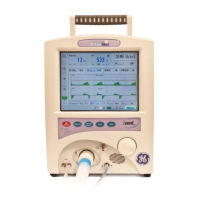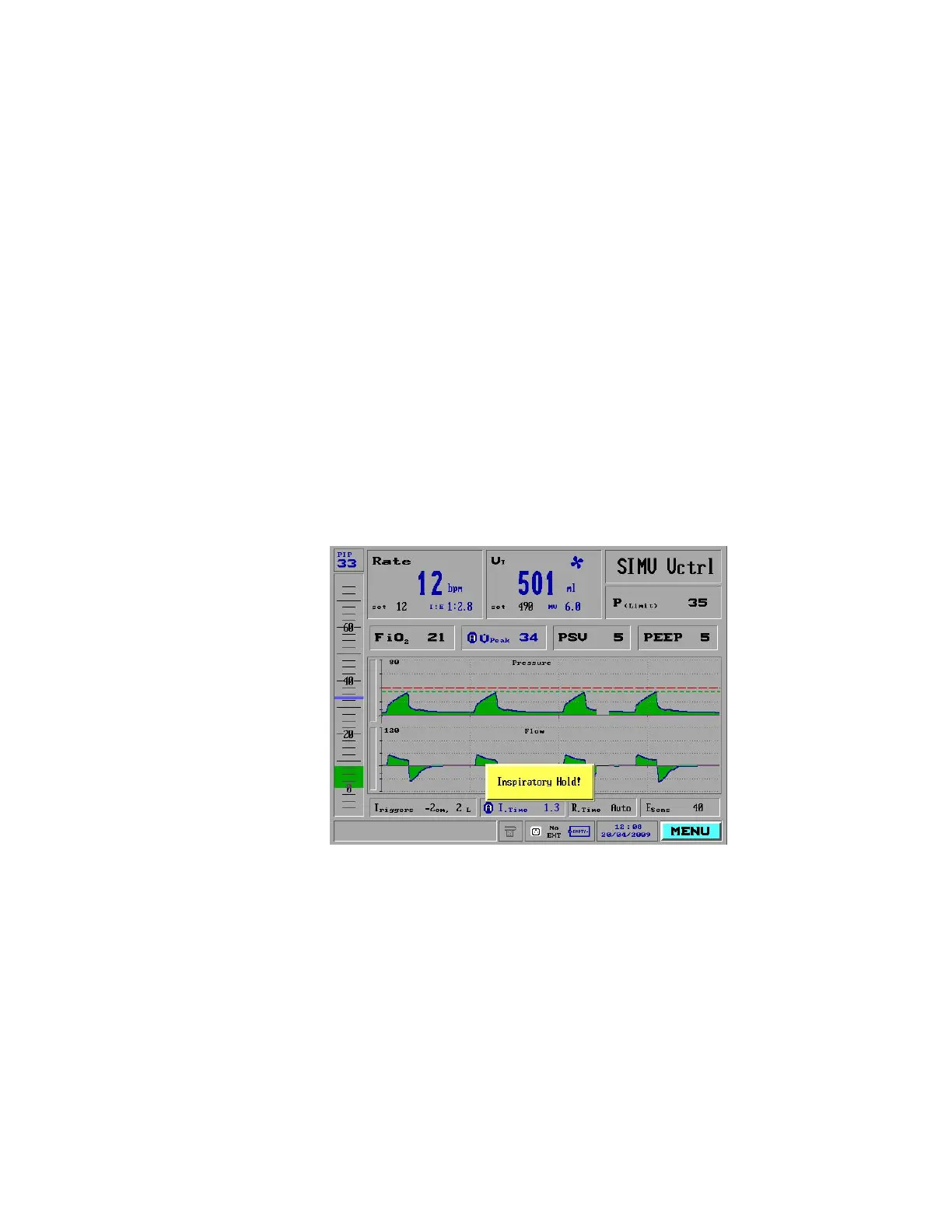236
RESPIRATORY TIME CONSTANT
Lastly the ventilator calculates the time constant of the respiratory system as the
product of the dynamic resistance and the static compliance of the respiratory
system as calculated using the above technique.
These calculated values can be viewed in the Respiratory Mechanics screen that
is described in page 238 Reviewing Static Mechanics and Intrinsic PEEP
Measurements.
PERFORMING A STATIC RESPIRATORY MECHANICS
MEASUREMENT
In order to execute a static hold maneuver the clinician must press the Hold
button once on the front panel of the ventilator. This initiates in the next breath
cycle an automated sequence in which the ventilator waits until the end of
inspiratory flow and then holds the exhalation valve closed until a plateau
pressure is reached.
The following pop-up window (Figure 175) appears on the screen of the ventilator:
Figure 175: Inspiratory Hold Popup
The ventilator automatically terminates the hold maneuver if the pressure
continues to rise once the exhalation valve is closed (signifying a patient is trying
to breathe against the exhalation valve). Similarly the ventilator also aborts the
maneuver if a stable plateau pressure is not reached during the hold maneuver.
The maximum time that the ventilator holds the exhalation valve closed for is
from 1 to 3 seconds depending on the patient’s tidal volume (See Table 17).
If the Hold button is pressed again or the Clear button is pressed during the
maneuver, then the hold maneuver is terminated.
During either inspiratory or expiratory hold maneuvers, the ventilator does not
perform either a purge of the flow sensor lines, or a zeroing of the flow sensor
reading.

